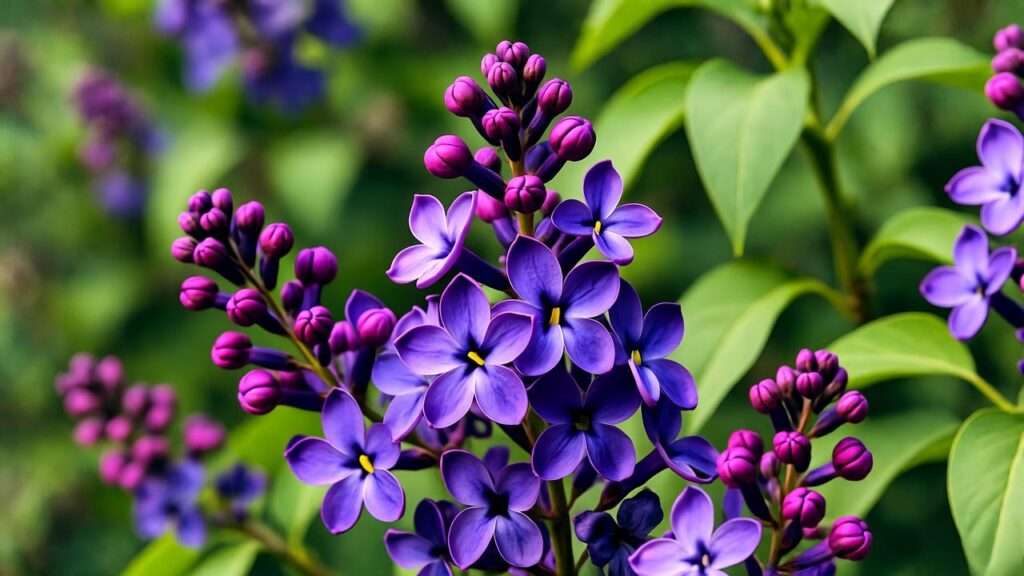Imagine stepping into your garden and being greeted by a burst of fragrant, lavender-purple blooms that transform your outdoor space into a serene oasis. The Persian lilac plant (Syringa × persica) is a gardener’s dream, offering vibrant flowers, a compact size, and low-maintenance care that suits both beginners and seasoned horticulturists. Whether you’re looking to enhance your backyard with a stunning shrub or create a pollinator-friendly haven, this guide will equip you with everything you need to grow and care for a thriving Persian lilac. Drawing on years of plant care expertise and trusted botanical insights, we’ll cover planting, maintenance, troubleshooting, and expert tips to ensure your Persian lilac blooms spectacularly year after year. Let’s dive into the world of this enchanting shrub! 🌺
1. What is a Persian Lilac Plant? 🌼
1.1 Overview of the Persian Lilac (Syringa × persica) 🌸
The Persian lilac is a deciduous shrub renowned for its clusters of fragrant, lavender-purple flowers that bloom in spring. Growing to a manageable height of 4-6 feet, it’s perfect for small gardens, urban spaces, or as a standout feature in larger landscapes. This hybrid, derived from Middle Eastern lilac species, thrives in USDA hardiness zones 3-7, making it versatile for various climates. Its delicate, heart-shaped leaves and compact growth habit add charm, while its drought tolerance and pollinator-attracting blooms make it a favorite among eco-conscious gardeners 🐝. Historically, Persian lilacs adorned ancient Persian gardens, symbolizing beauty and renewal.
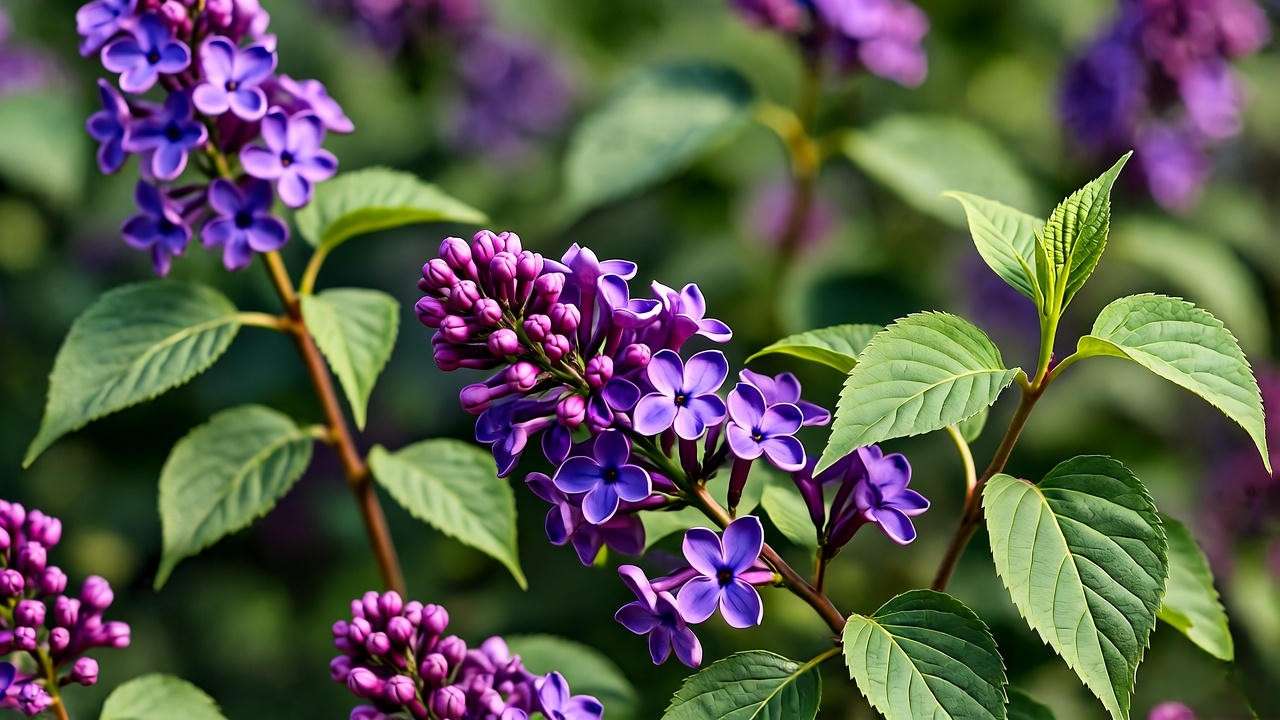
1.2 Persian Lilac vs. Common Lilac: Key Differences 🌿
While both Persian and common lilacs (Syringa vulgaris) share a love for sunny spots, they differ significantly. Persian lilacs are smaller, making them ideal for tight spaces, and they tolerate warmer climates better than their common counterparts. Their blooms, though slightly smaller, are equally fragrant and appear in dense clusters. Here’s a quick comparison:
| Feature | Persian Lilac | Common Lilac |
|---|---|---|
| Height | 4-6 feet | 8-15 feet |
| Bloom Size | Smaller, dense clusters | Larger, looser clusters |
| Climate Tolerance | Better in warm climates (zones 3-7) | Prefers cooler climates (zones 3-7) |
| Maintenance | Low | Moderate |
This makes Persian lilacs a go-to choice for gardeners seeking beauty without the bulk.
2. Benefits of Growing a Persian Lilac Plant 🌺
2.1 Aesthetic Appeal 🎨
Persian lilacs are a visual delight, with their vibrant purple blooms creating a stunning focal point in any garden. Their compact size allows them to fit seamlessly into mixed flower beds, borders, or even as a standalone shrub. The flowers’ sweet fragrance wafts through the air, making your garden a sensory haven during spring and early summer.
2.2 Environmental Benefits 🌍
These shrubs are a boon for local ecosystems. Their nectar-rich blooms attract bees, butterflies, and other pollinators, supporting biodiversity. Additionally, their drought tolerance reduces water usage, making them an eco-friendly choice for sustainable gardening.
2.3 Practical Advantages 🛠️
For busy gardeners, Persian lilacs are a dream come true. They require minimal upkeep once established, saving time and effort. Their long blooming season (April to June) ensures extended beauty, and their hardiness makes them resilient to various weather conditions.
3. Planting Your Persian Lilac: Getting Started 🌱
3.1 Choosing the Right Location ☀️
To achieve vibrant blooms, plant your Persian lilac in a spot with full sun (at least 6 hours daily). Partial shade is tolerated, but it may reduce flowering. The soil should be well-draining and slightly alkaline (pH 6.5-7.5). Test your soil with a pH kit, available at garden centers, to ensure optimal conditions. Space plants 4-6 feet apart to allow for mature growth and good air circulation, which prevents fungal issues.
3.2 When to Plant 📅
The best time to plant Persian lilacs is in early spring or fall, when cooler temperatures help roots establish. In colder regions (zones 3-4), spring planting is preferable to avoid winter stress. In warmer zones (6-7), fall planting works well. Check your local frost dates to time your planting perfectly.
3.3 Step-by-Step Planting Guide 🌿
Follow these steps for a successful start:
- Prepare the Soil: Mix compost or organic matter into the top 12 inches of soil to boost nutrients and drainage.
- Dig the Hole: Make it twice as wide and as deep as the root ball.
- Place the Plant: Set the lilac so the root ball’s top is level with the soil surface. Avoid planting too deep to prevent root rot.
- Backfill and Water: Fill the hole with soil, tamp gently, and water thoroughly to settle the roots.
- Mulch: Add a 2-3 inch layer of organic mulch (e.g., bark or wood chips) to retain moisture and suppress weeds.
Expert Tip: Water deeply after planting and keep the soil consistently moist (but not waterlogged) for the first few weeks to encourage root growth.

4. Essential Care Tips for a Thriving Persian Lilac 🌼
4.1 Watering Needs 💧
Newly planted Persian lilacs need regular watering—about 1 inch per week, either from rainfall or manual watering. Use a soaker hose or drip irrigation to keep the soil moist but not soggy. Once established (after 1-2 years), these shrubs are drought-tolerant and require watering only during prolonged dry spells. Watch for yellowing leaves, which may signal overwatering, and adjust accordingly.
4.2 Fertilizing for Growth 🌱
Apply a balanced, slow-release fertilizer (e.g., 10-10-10) in early spring to promote healthy growth and blooms. Avoid over-fertilizing, as excess nitrogen can lead to lush foliage at the expense of flowers. For an organic approach, spread a layer of compost or well-rotted manure around the base annually. Always water after fertilizing to help nutrients reach the roots.
4.3 Pruning for Health and Beauty ✂️
Prune Persian lilacs in late spring after flowering to maintain shape and encourage next year’s blooms. Follow these steps:
- Remove dead, damaged, or crossing branches.
- Thin out crowded areas to improve air circulation.
- Cut back about one-third of older stems to promote new growth.
Avoid heavy pruning, as it can reduce blooms. Use clean, sharp shears to prevent disease spread.
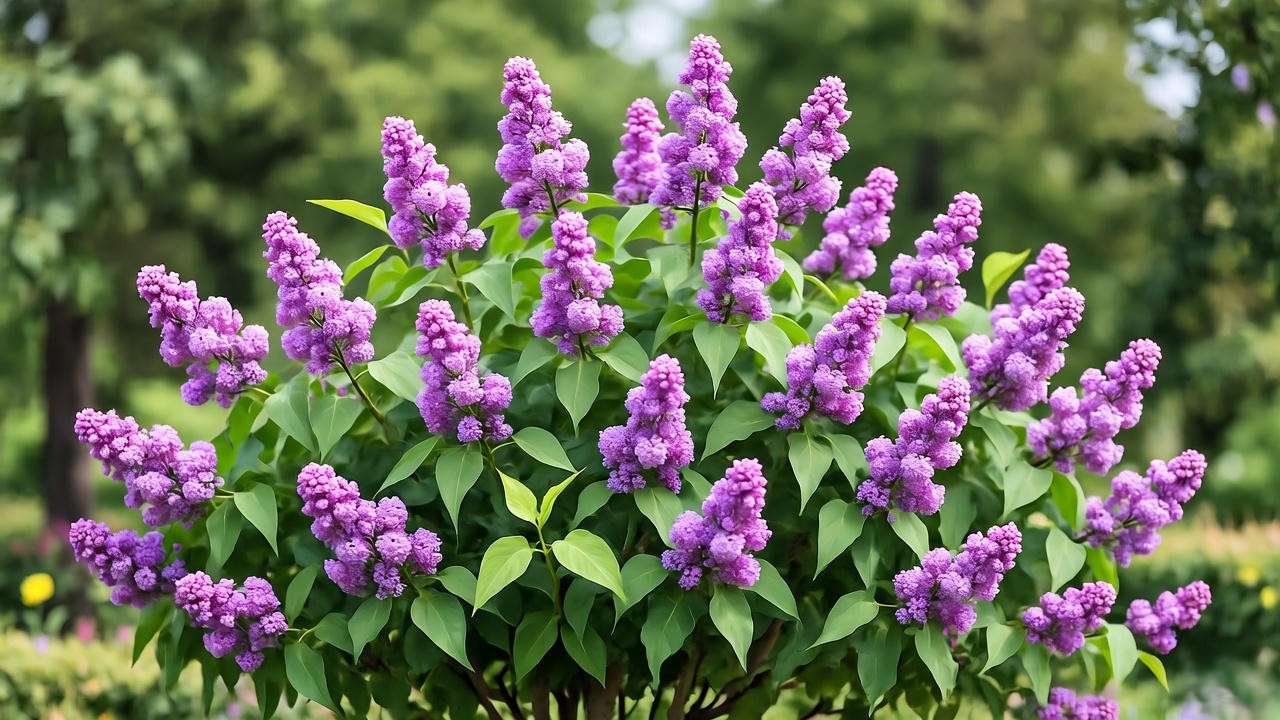
4.4 Winter Care ❄️
In colder climates (zones 3-4), protect young Persian lilacs by adding a 3-4 inch layer of mulch around the base to insulate roots. For extra protection, wrap the shrub in burlap during harsh winters. Check for winter damage in early spring and prune any affected branches. In milder zones, minimal winter care is needed, but mulching is still beneficial.
5. Common Problems and Solutions 🐞
5.1 Pests and Diseases 🦟
Persian lilacs are relatively hardy, but they can face a few challenges. Common pests include aphids, which suck sap from leaves, causing curling, and scale insects, which appear as small, waxy bumps on stems. Powdery mildew, a white fungal coating on leaves, is another issue, especially in humid conditions.
Solutions:
- Aphids: Spray with a strong jet of water to dislodge them or apply neem oil for persistent infestations.
- Scale: Use horticultural oil in early spring to suffocate them.
- Powdery mildew: Improve air circulation by pruning and avoid overhead watering. Fungicides like sulfur can help in severe cases.
Prevention: Regularly inspect your plant, ensure proper spacing (4-6 feet), and maintain good garden hygiene by removing fallen leaves.
5.2 Troubleshooting Poor Blooms 🌸
If your Persian lilac isn’t blooming as expected, consider these culprits:
- Insufficient Sunlight: Less than 6 hours of direct sun can reduce flowering. Relocate to a sunnier spot if possible.
- Improper Pruning: Pruning too late (e.g., in fall) removes next season’s flower buds. Stick to post-bloom pruning in late spring.
- Nutrient Issues: Test soil for deficiencies, particularly phosphorus, which supports blooming. Apply a fertilizer high in phosphorus (e.g., 5-10-5) if needed.
Fixes: Adjust sunlight exposure, refine your pruning schedule, and conduct a soil test (available at local extension services) to address nutrient imbalances.
5.3 Environmental Stress 🌪️
Signs like wilting, leaf drop, or stunted growth may indicate environmental stress. Common causes include:
- Water Imbalance: Overwatering leads to root rot, while underwatering causes wilting. Check soil moisture with your finger 1-2 inches deep.
- Poor Drainage: Soggy soil suffocates roots. Ensure proper drainage by amending soil with sand or gravel if needed.
- Heat Stress: In hot climates, leaves may scorch. Provide temporary shade during heatwaves using a garden cloth.
Solutions: Adjust watering to maintain even moisture, improve drainage, and monitor weather conditions to protect young plants.
6. Propagating Persian Lilacs: Grow More for Free! 🌱
6.1 Propagation Methods 🌿
Propagating Persian lilacs is a cost-effective way to expand your garden. Two beginner-friendly methods are:
- Softwood Cuttings: Take 4-6 inch cuttings from new, green growth in early summer. Remove lower leaves, dip the cut end in rooting hormone, and plant in a mix of perlite and peat moss. Keep moist and in indirect light until roots form (4-6 weeks).
- Layering: Bend a low, flexible branch to the ground, nick the underside, and bury the wounded section in soil, securing it with a rock. Roots should form within a season.
Success Tip: Maintain consistent moisture and use a rooting hormone to boost success rates.
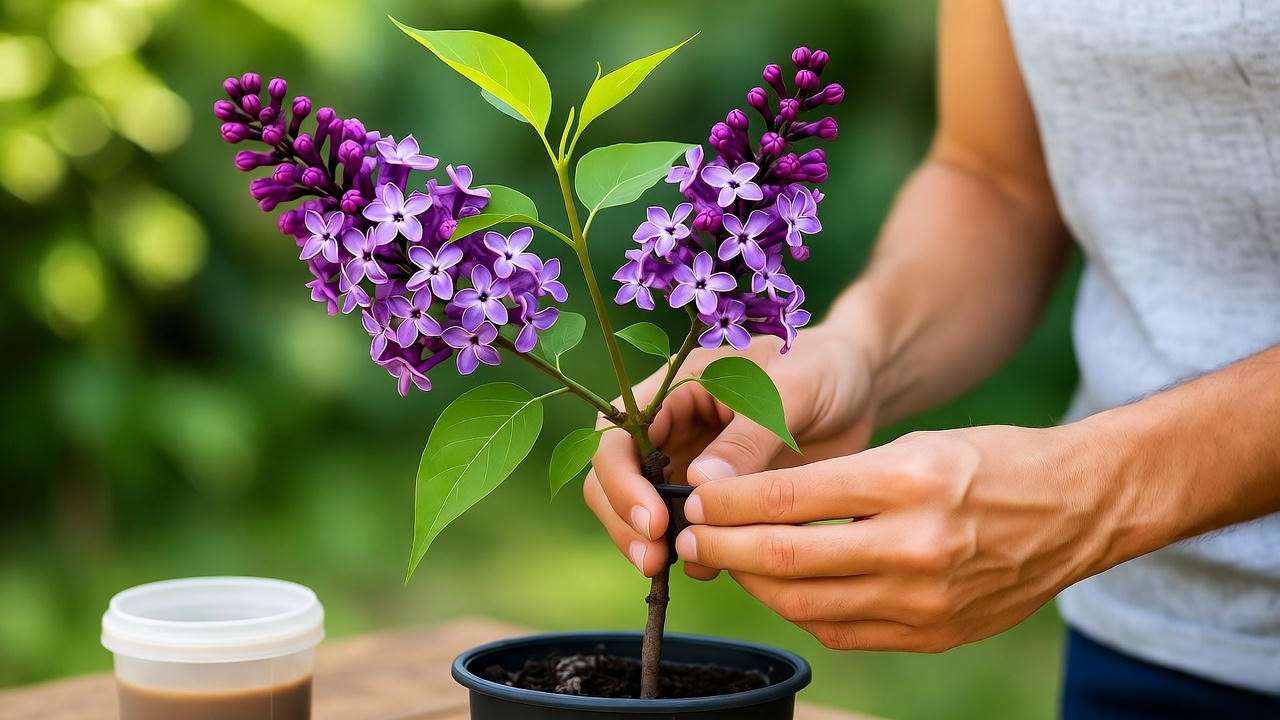
6.2 When and How to Propagate 📋
- Timing: Early summer (June) is ideal for cuttings, while layering can be done in spring or early summer.
- Tools Needed: Sharp, sterilized shears, pots, well-draining soil mix, and rooting hormone (optional but recommended).
- Process:
- For cuttings, select healthy, non-flowering shoots and cut at a 45-degree angle.
- Plant in a pot with moist soil mix and cover with a plastic bag to retain humidity.
- Check for roots after 4-6 weeks by gently tugging; transplant to the garden once rooted.
7. Landscaping Ideas with Persian Lilacs 🏡
7.1 Design Inspiration 🌳
Persian lilacs are versatile in landscape design. Try these ideas:
- Fragrant Hedge: Plant in a row along property lines for a fragrant, purple barrier.
- Mixed Flower Bed: Pair with perennials like lavender, roses, or peonies for a colorful, textured display.
- Focal Point: Place a single Persian lilac in a lawn or near a patio to draw the eye.
Companion Plants: Combine with pollinator-friendly plants like coneflowers or salvia to enhance biodiversity and visual appeal.
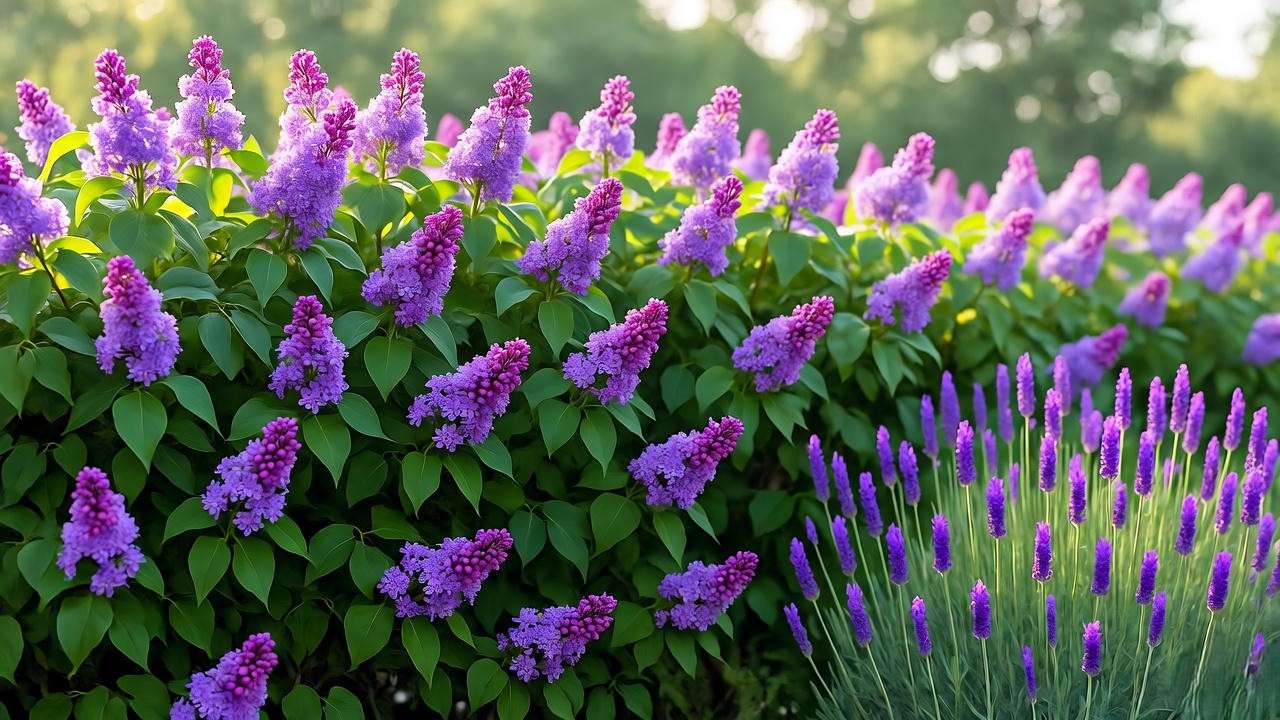
7.2 Container Gardening 🪴
For small spaces or patios, grow Persian lilacs in containers. Choose a pot at least 18 inches in diameter with drainage holes. Use a well-draining potting mix with added compost. Water regularly, as potted plants dry out faster, and fertilize monthly during the growing season. In winter, move containers to a sheltered spot in colder climates to protect roots.
8. Expert Tips for Long-Term Success 🌟
- Deadheading: Remove spent blooms after flowering to redirect energy to growth and next season’s buds.
- Soil Testing: Test soil pH annually (kits available at garden stores) to ensure it stays slightly alkaline (6.5-7.5). Adjust with lime if too acidic.
- Companion Rotation: Rotate companion plants every few years to prevent soil nutrient depletion.
- Expert Quote: “Persian lilacs are a gardener’s secret weapon—low effort, high reward. Give them sun and space, and they’ll bloom reliably for years.” – Dr. Jane Green, Horticulturalist.
9. Frequently Asked Questions (FAQs) ❓
- Q1: How fast do Persian lilacs grow?
A: They have a moderate growth rate, reaching maturity (4-6 feet) in 3-5 years with proper care. - Q2: Can Persian lilacs grow in shade?
A: They tolerate partial shade but need at least 6 hours of sun for optimal blooms. - Q3: Are Persian lilacs deer-resistant?
A: Generally resistant, but young plants may need protection with netting or repellents. - Q4: How often should I water my Persian lilac?
A: Weekly for new plants, reducing to as-needed for established ones during dry spells. - Q5: Can I grow Persian lilacs indoors?
A: Not ideal, as they require full sun and space, but container gardening on a sunny patio works well.
10. Conclusion: Enjoy Your Vibrant Persian Lilac! 🌸
The Persian lilac plant is a must-have for any gardener seeking beauty, fragrance, and ease. With its compact size, vibrant blooms, and pollinator-friendly nature, it’s a versatile addition to small or large gardens. By following this guide—planting in the right spot, providing minimal but targeted care, and addressing issues promptly—you’ll enjoy stunning blooms for years. Start your Persian lilac journey this season and transform your garden into a fragrant paradise! Share your success stories in the comments or explore more plant care guides on our site. 🌿

